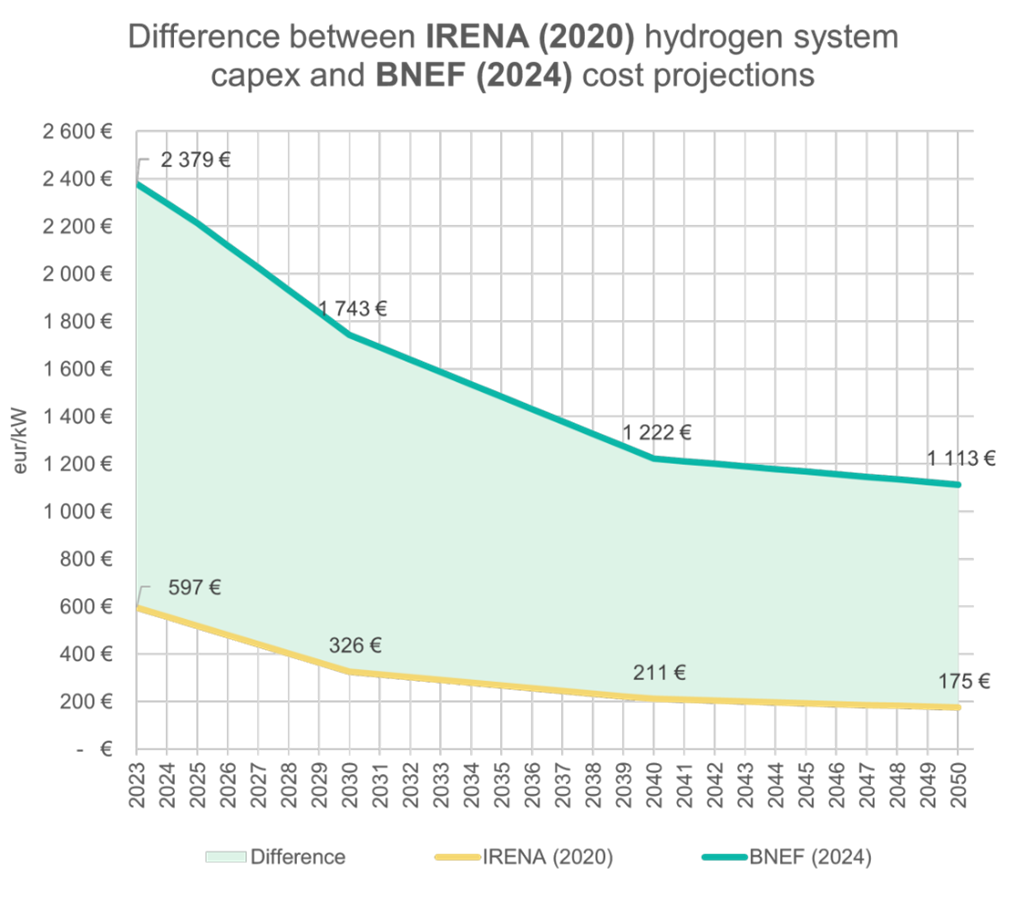Decarbonization roadmaps: Time for a reality check
Decarbonization is no longer just an environmental imperative - it is a key strategic priority for companies across Europe. Most companies with high CO2 emissions already have a CO2-roadmap. This roadmap is a strategic plan that describes how a company intends to reduce its greenhouse gas emissions over a certain period of time, in order to achieve climate targets such as net zero or specific emission reductions.
However, many of these roadmaps are based on economic or regulatory assumptions that are either outdated or uncertain. In the light of new data and developments, it is important, that companies review their decarbonization strategies and ensure that they are anchored in the reality of today and not in the optimism of yesterday.
The cost of unrealistic assumptions
Recent analyses, such as the significant reassessment of the costs for electrolysis plants, highlight a trend: the gap between vision and reality. For example, the average cost of producing green hydrogen is significantly higher than previously forecasted, which affects the feasibility of many companies' transformation plans.
The difference between hydrogen visions and the reality: Investment values, Quelle: Visa Siekkinen, LinkedIn
This is in line with broader industry findings that the costs associated with decarbonization - from CO2capture to green energy infrastructure - are higher and certain framework conditions occur later than expected.
The economic and political climate is also changing. Decarbonization efforts often require substantial subsidies, but limited public finances leave less scope for such support. In Europe the need to invest in both the safety and competitiveness of industry is likely to further restrict the funds available for decarbonization. These changing conditions add another layer of complexity for companies that rely on outdated assumptions.
The danger of doing nothing
In view of these challenges, some companies may be tempted to put their decarbonization projects on hold until the picture becomes clearer. However, this is a risky game. Delays can lead to companies suddenly being unprepared and confronted with regulatory changes, changing customer requirements or breakthroughs in competing technologies.
The industrial transformation towards a green economy is already taking place. In addition to technological innovation and the associated cost reductions for green technologies, China's industrial policy with the aim of becoming a technology leader in green technologies is also a key driver of this transformation.
The speed of transformation is usually underestimated due to exponential growth.
evelopment of solar systems, electric vehicles and batteries, Source: RMI The Cleantech Revolution (June 2024)
Learning from the automotive industry
The rapid turnaround in the automotive industry towards electric vehicles is a vivid example of how major changes can take place. Driven by China's industrial policy and its long-term vision to dominate in green technology, global car manufacturers have had to accelerate their battery and EV strategies. Those who have waited too long or relied on outdated assumptions are now finding it difficult to keep pace with the market leaders.
VW and Tesla share prices in January 2025, Source: Yahoo finance
The solution: an agile roadmap with strategic foresight and options
Companies need to adapt their plans with agility and foresight:
Carry out a reality check: Check basic assumptions about costs, technological readiness and schedules. Use updated data to identify gaps in current strategies.
Scenario planning: Integrate strategic foresight to explore several possible scenarios for the future. For example, consider how different developments in CO2prices, hydrogen infrastructure and geopolitical policies could affect your roadmap.
Parallel approaches: Do not rely on a single technology or approach. Instead, develop multiple options that can be scaled or adapted as conditions change. Companies that initially focused on hydrogen for the decarbonization of process heat may have to rethink their strategies. In view of rising hydrogen costs and advances in electrification, the electrification of heat could represent a more cost-effective alternative. This underlines the importance of being open to innovation and regularly reviewing assumptions in order to discover new opportunities.
Monitor and adjust: Implement early detection systems to recognize emerging trends or disruptions. This enables you to react quickly when opportunities or risks arise.
Create a dynamic decarbonization roadmap: Most companies already have a decarbonization roadmap. However, these roadmaps often consist of collections of projects with financial KPIs (e.g. NPV, CO2 avoidance costs and CO2 reduction potential), which were calculated by decentralized project managers. This decentralization leads to a lack of transparency of the underlying assumptions. This makes it difficult to carry out quick sensitivity analyses. On the other hand, a centrally managed roadmap enables companies to adapt to changing assumptions in real time and to improve decision-making.
By combining the steps described above, you can update your roadmap and make it fit for the future. Through the integrated optimization of CO2, profitability and risk you can also create a competitive advantage in a changing economy.



